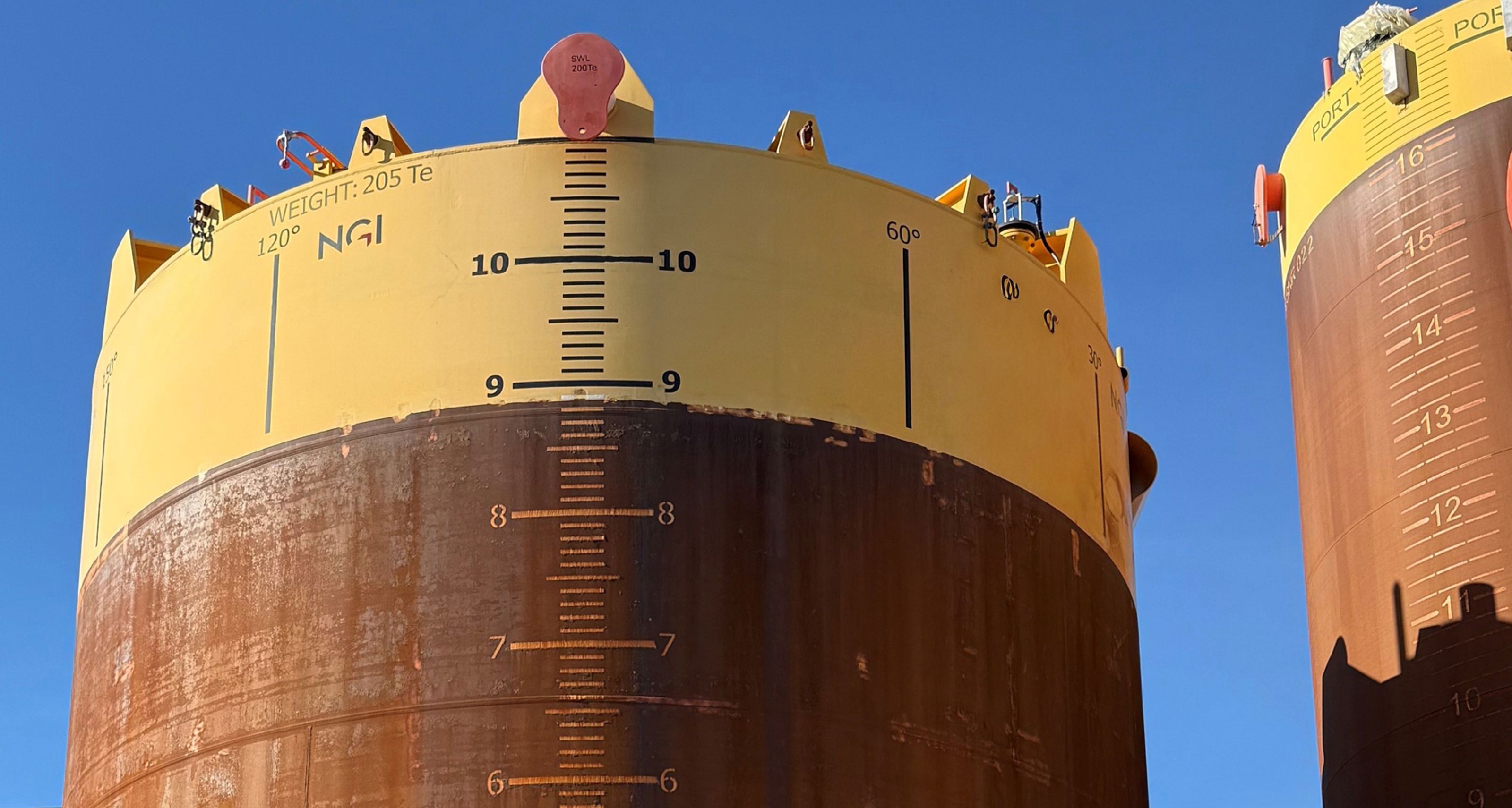NGI with a unique test bucket for offshore wind
A 205-ton suction bucket equipped with advanced instrumentation could become an essential tool for reducing risk in the development of offshore wind farms in challenging seabed conditions. NGI has taken over the bucket and made it available for new projects.

The instrumented suction bucket at Randaberg, near Stavanger, stands 15 meters tall, weighs 205 tonnes, and is equipped with advanced sensors, pumps, cameras, and fiber-optic gauges. ( Photo: NGI)
Ever-larger wind turbines and demanding ground conditions are increasing the requirements for offshore foundations. Piles have long been the traditional solution, but suction buckets (Suction Bucket Jackets) have established themselves as a proven alternative – especially where piling results in high installation resistance or uncertain load-bearing capacity. Based on recent projects, NGI has demonstrated that bucket foundations can be installed in locations previously considered too risky, thereby expanding the technology’s range of applications.
Real-time data
The instrumented test bucket, now owned by NGI, makes it possible to document the installation process at full scale, thereby reducing risk in planning new offshore wind projects.
“We can now measure what we previously only calculated. We obtain continuous data on pore pressure, penetration, and stresses in the steel as the bucket is sucked into the seabed. Comparable data do not exist in the research literature – these results will advance the state of knowledge in offshore geotechnics. This gives developers and consultants a stronger basis for decisions before major investments,” says Egil Solhjell, Senior Specialist in field testing and offshore instrumentation at NGI.
Full-scale tests in real soil types can determine whether a planned project can proceed.
“With this bucket, we can test how easily the equipment can be installed in everything from fine-grained sediments to problematic layers containing glauconite – a greenish, weak mineral that often makes the ground unstable. That helps reduce uncertainty early in the project,” Solhjell explains.
Built for the U.S. – relevant for Europe
The bucket was initially constructed as a full-scale verification tool for a site with challenging ground conditions off the coast of Massachusetts, USA. After project changes there, it was left unused. In the summer of 2025, NGI took ownership and responsibility for the instrumentation to make it available for new test campaigns.
“This bucket is a rare opportunity. The real value is that we can now offer the industry a testing tool that few others in the world have,” says Solhjell.
How the test bucket works
The principle is well known: water is pumped out from inside the bucket, the pressure drops, and the bucket is controlledly drawn into the seabed. The unique aspect here is the instrumentation, which documents what actually happens—in real time—both in the soil and in the steel structure. The data can confirm penetration resistance, assess the risk of buckling under high resistance, and calibrate models for different soil types.
“We can monitor the process with sensors, fiber-optic measurements, and sonar. That allows us to state with greater confidence that the foundation can be installed, while also collecting data that improves future designs,” Solhjell points out.
Next steps
The bucket is physically located at Randaberg near Stavanger. NGI is now inviting dialogue with developers, consultants, and suppliers who wish to carry out targeted full-scale tests that can reduce geotechnical and operational risk in upcoming offshore projects.
“The most important thing is to reduce risk for developers. If you can document that the foundation can be installed, you can save time and large sums of money. That’s where this bucket can make a real difference,” Solhjell concludes.

Egil Solhjell
Principal Engineer Field Testing and Offshore Instrumentation egil.solhjell@ngi.no+47 413 35 370

Stephen Hayes
Head of Section Field Testing and Offshore Instrumentation stephen.hayes@ngi.no+47 934 10 760